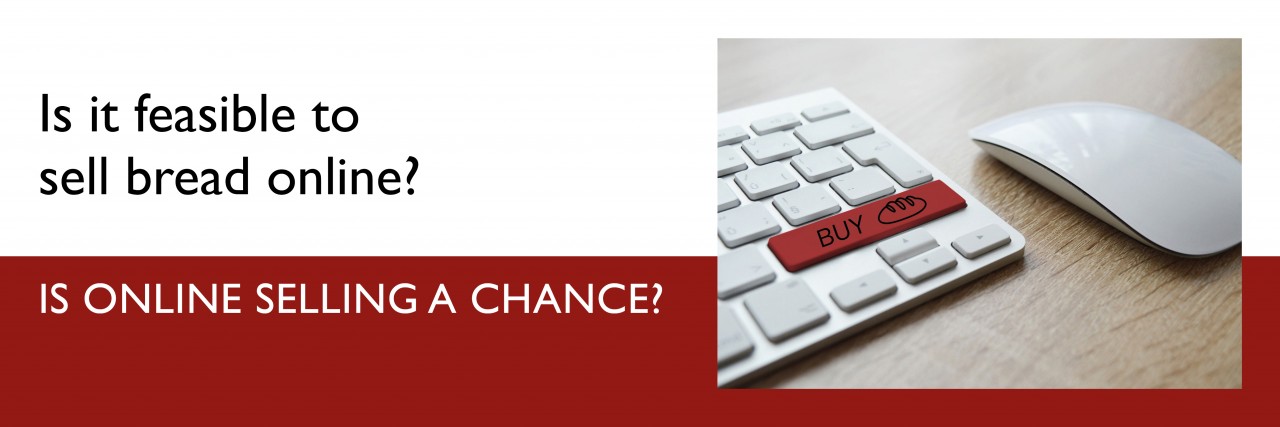Nieuws
Is it feasible to sell bread online?
Charles Darwin already said "it is not the strongest species that survives, nor the most intelligent, but the one that best responds to change."
The current situation opens a complicated scenario, especially for the self-employed and small companies. For many it also becomes an opportunity to reorient their business, thus adapting to the new reality that our society currently lives.
In the 1990s, several companies reinvented themselves within their sector, some as a necessity, others seeing an opportunity for expansion. All of them experienced very substantial growth: ZARA in the fashion world, NH in hotels, IKEA in home decoration and ING in banking; they are just a few examples. 20 years later, with the 2008 crisis, Nintendo reinvented video game consoles by taking out the "Wii" and Apple reinvented mobile phones with the "iPhone".
If we consider that bread sales have decreased considerably in the past years, we now see that a health crisis can negatively affect our sector even more. The world of bakery has seen how its businesses have had to close in a few weeks due to the quarantine because of the closure of some of its large clients in the world of hospitality and restaurants. Others have been able to keep their business running by being close to their daily customers, but they are a minority.
Bakery is part of the primary sector of food that ensures the supply of food to the population.
So shouldn't the bakery sector have a number of guarantees for it to not have to close down or see its sales drop? This is where we ask ourselves if there is an alternative for our sector not to be negatively impacted in the present and in the future. Can we reflect on other companies and sectors that have reinvented themselves in the past? Is it feasible to sell bread online?
We know the advantages of going online and changing the distribution system, because most of us are online consumers. Who hasn't already booked a hotel room via the Internet or ever bought at Amazon? Who hasn't ever used an APP to check the weather or google an address? Basically, the tools are already available, only they are not adapted yet to our environment and our businesses.
E-commerce, or the sale of goods over the internet, reduces costs, builds customer loyalty, provides greater audience reach, adds security for the seller and the buyer, facilitates product delivery and increases the average ticket among customers.
In addition, online stores are open to the public 24 hours a day, have no geographical limitations, can help increase the number of customers, allow a study of customers on their tastes and purchases, increase business visibility and can create a community.
Every company has the possibility to create a personal website with an online store or to join a collaborative platform, which is nothing more than a website that centralizes all the functionalities linked to online sales, making all its features available to the different users.
Specifically, we would be talking about the creation of a marketplace.
Marketplace is the coined English term that refers to an online marketplace where products and inventory information are provided by users, while transactions are processed by the owner of the system. The best known and used marketplaces worldwide are Airbnb, Alibaba and Amazon.
The seller increases its online presence and visibility by being included in the marketplace, saving the creation and maintenance that it takes to have your own website with your online store. In addition, it would improve its positioning in the search engines by being a website with more traffic versus a website of an individual bakery. It would be an additional sales channel, which would also provide greater credibility by being included in a list of national bakeries.
To start your business in a marketplace, it is necessary to establish a business plan that defines the physical products to be sold, the product distribution strategy and who would be the buyers and the sellers (a B2B business, i.e. business to business or a B2C business, i.e. business to customer).
If you opt for direct distribution of your products, it means that you will be in charge of the immediate sale to the consumer, which you can do through an online store or a marketplace.
These are two of the most common options as a distribution channel for the bakery:
- The company manages the transport of the products with its own employees and logistics. The goods are usually located in a central warehouse and in other local secondary warehouses.
- An external delivery service is contracted, such as DHL or UPS, which is responsible for transporting the goods. Here, too, central or local warehouses are necessary. In this case, you save on staff and transport, although you have to give up control of the aspects that guarantee timely and reliable delivery.
In either case, the distribution costs would be borne by the consumer and added to the purchase price. In order to make the distribution costs more affordable and interesting for the consumer, it is recommended to provide these to the purchase volume. This means, the higher the volume and purchase cost, the lower the distribution costs. It is not the same to charge € 1.5 of distribution costs on one loaf of bread, as to charge € 1.5 of distribution costs on six loaves of bread. If, however, a customer buys e.g. 6 croissants and 12 rolls in addition to the six loaves of bread, the distribution costs can even be waived thanks to the high sales volume.
So, would you be encouraged to join a Bakers' Marketplace in your country? Would you like the Richemont Club in your country to lead this project for its members? Do you think that selling healthy bread online could positively benefit your business?
The discussion is open and we would like to hear your opinion.


Comments